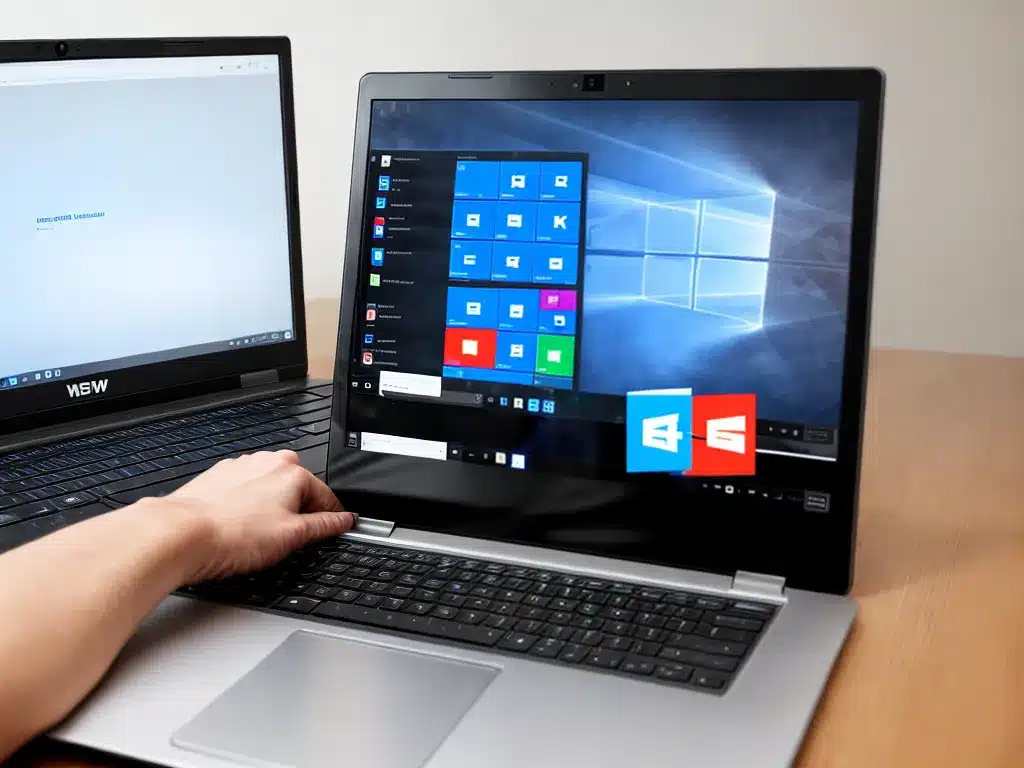
Doing a clean install of Windows on your laptop allows you to start fresh with a brand new Windows installation. This can help improve performance and fix problems caused by outdated drivers or software issues. Here is a step-by-step guide on how to do a clean install of Windows on a laptop:
Back Up Your Data
Before beginning the clean install process, it’s crucial to back up your data. A clean install will wipe your entire hard drive, so you’ll lose everything if you don’t have a backup. Here are some ways to back up your data:
-
Copy important files to an external hard drive or cloud storage. Focus on documents, photos, music, and other irreplaceable data.
-
Use Windows Backup to create a system image. This will save a snapshot of your Windows installation that can be restored later.
-
Sync data like documents to cloud storage like OneDrive.
Double check that your backups were completed successfully before proceeding!
Gather Installation Media
You’ll need installation media to do a clean install of Windows. Here are some options:
-
Use a Windows installation DVD – You may have one from when you purchased your laptop.
-
Create installation media – Use the Windows Media Creation Tool to make a bootable USB or DVD with the latest Windows version.
-
Recovery partition – Some laptops have a hidden recovery partition with the factory Windows version. You may be able to boot from this.
Make sure you have the 25-character product key for your version of Windows available as you’ll need this during installation.
Boot From the Install Media
Next, you need to boot your laptop from the installation media:
-
Insert the DVD or USB and restart your laptop.
-
Boot into the BIOS setup. This can usually be accessed by pressing F2, Delete, or one of the other function keys during boot.
-
Change the boot order to boot from the DVD or USB first.
-
Save changes and exit the BIOS. The laptop should now load the installer.
If you don’t see the installer, you may need to adjust the BIOS settings like disabling Secure Boot. Refer to your laptop’s documentation for details on accessing the BIOS.
Erase and Format the Hard Drive
Once you’re in the Windows installer, you need to erase and format the hard drive:
-
On the installer screen, click “Install Now.”
-
Enter in your product key if prompted.
-
On the next screen, select “Custom: Install Windows only (advanced).”
-
Select the primary hard drive and click “Format.” This will permanently erase all data!
-
Once formatting is complete, click “Next” to begin the clean installation.
Follow the on-screen prompts to finish the installation process. Be sure to install any necessary drivers for your hardware when done.
Restore Your Files and Programs
With a fresh Windows install, you’ll need to restore your data and reinstall programs:
-
Restore files from your backups and cloud storage.
-
Reinstall important programs and applications.
-
Update Windows, drivers, and utilities to the latest versions.
-
Customize Windows with your preferred settings.
-
Run Windows Update to get all the latest patches and fixes.
A clean install takes some work, but can breathe new life into an old laptop and resolve many issues caused by aging Windows installations. Just be absolutely sure your data is backed up first!












